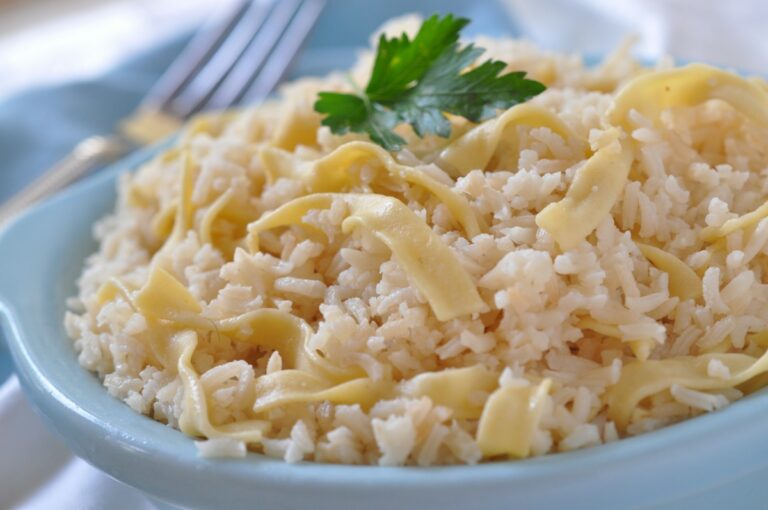Acid Reflux Friendly Smoothies – A Delicious and Gentle Way to Soothe Your Stomach
You know that awful burn that creeps up after you eat something innocent like a bowl of fruit or a sip of coffee? That used to be my reality — nearly every morning. So, I started experimenting in my kitchen, testing what my gut could handle. Turns out, smoothies — the right kind — can be a total game-changer for acid reflux sufferers like me. Let’s talk about how a chilled glass of the right blend can actually calm your stomach instead of making it worse.
Why Smoothies Can Work for Acid Reflux Relief

It might sound too good to be true, but smoothies can genuinely help soothe an inflamed digestive tract — if you use the right ingredients. The cool temperature alone is a comforting bonus when your esophagus feels like it’s on fire.
Low-Acid and High-Alkaline Options
Certain fruits and vegetables are naturally low in acid and high in soothing properties. These are my go-tos:
- Bananas – naturally alkaline and gentle on the stomach
- Oats – fiber-rich and soothing, ideal for morning smoothies
- Almond milk – a dairy-free base that’s less likely to trigger reflux
- Ginger – a small amount adds anti-inflammatory benefits
- Spinach – low-acid leafy green that blends well
What I avoid? Anything citrusy, too much fat, and even “healthy” ingredients like yogurt, which can be a sneaky trigger if you’re sensitive to dairy.
Common Smoothie Ingredients That Trigger Reflux

Not every smoothie is reflux-friendly. Trust me, I learned the hard way. I used to think anything “natural” was safe until I threw in some orange juice and found myself regretting every sip.
What to Watch Out For
- Citrus fruits – oranges, lemons, pineapples, and even some berries
- Chocolate or cocoa powder – yes, even the “healthy” kind
- High-fat dairy – full-fat yogurt or cream can relax the lower esophageal sphincter
- Mint – surprisingly, peppermint is a known reflux trigger
For a full breakdown on which foods to avoid, this guide from Healthusias is an absolute must-bookmark.
My Favorite Smoothie Combos That Don’t Set My Throat on Fire

After months of trial and error, I’ve come up with a few combos that taste great and don’t come with a side of heartburn. Here are two of my go-to smoothies:
Soothing Green Banana Blend
- 1 ripe banana
- 1/2 cup rolled oats (pre-soaked or cooked)
- 1 handful fresh spinach
- 1/2 cup unsweetened almond milk
- A tiny pinch of grated ginger
Blend until smooth. It’s creamy, not too sweet, and it’s never let me down.
Oat-Ginger Apple (Without the Citrus Bite)
- 1/2 peeled and cooked apple (not raw)
- 1/2 cup pre-cooked oats
- 1 cup oat milk or rice milk
- 1/4 teaspoon fresh ginger
This one has a mellow, earthy flavor — especially great in cooler weather.
Need more ideas? Healthusias already covered some fantastic options in this smoothie-focused article that’s worth checking out.
What Makes a Smoothie Truly GERD-Friendly?

There’s a difference between a regular smoothie and one that actively helps manage acid reflux. A GERD-friendly smoothie focuses on reducing acid load, improving digestion, and calming the digestive tract — without spiking gastric acid production.
Checklist for Building a GERD-Friendly Smoothie
- Base: Choose alkaline options like almond, oat, or rice milk
- Fruits: Go for low-acid picks like bananas, melons, or cooked apples
- Greens: Stick with spinach or kale (small amounts)
- Extras: Add flaxseed, oats, or ginger sparingly
And don’t forget — temperature matters. Too cold can be a trigger for some, so room-temp smoothies might work better if you’re extra sensitive.
When Smoothies Aren’t Enough: Knowing Your Limits

Let’s be real — smoothies aren’t magic. If your reflux is intense or chronic, you’ll need a more holistic approach. I personally found relief only after combining these dietary shifts with lifestyle changes that focused on stress, timing meals, and posture.
Also, don’t hesitate to get professional input. The National Institute of Diabetes and Digestive and Kidney Diseases (NIDDK) outlines when it’s time to see a doctor about GERD symptoms, especially if they interrupt sleep or daily activities.
Of course, while smoothies aren’t a cure, they can definitely be part of a larger, reflux-friendly diet plan. The good news? There’s plenty more to explore — from juices to soups — that are just as gentle and satisfying.
Best Times to Drink Smoothies for Acid Reflux Relief

If you’re anything like me, timing is everything. I used to drink smoothies right after dinner thinking I was making a healthy choice — big mistake. The bloat and reflux that followed made me think smoothies weren’t for me at all. Turns out, when you drink them matters just as much as what’s in them.
When to Sip and When to Skip
- Best time: Mid-morning or early afternoon, at least an hour after breakfast or lunch
- Before bed? Not ideal — late-night smoothies can trigger nighttime reflux
- Post-workout: Yes, but keep it light and easy to digest
Avoid chugging your smoothie all at once. I like to sip slowly over 10–15 minutes. Your digestive system will thank you for it.
How to Store GERD-Friendly Smoothies

Prepping smoothies ahead of time has been a lifesaver during my workweek. But not all storage methods are equal when it comes to maintaining that soothing texture and avoiding flavor shifts.
Tips to Keep Them Fresh
- Use airtight glass jars, not plastic — they keep flavors intact better
- Store in the fridge for up to 24 hours, 48 hours max
- Shake before drinking — some fiber-rich ingredients settle fast
Don’t freeze smoothies with oats or almond milk — the texture gets weird. I learned that one the hard way. What you *can* do is freeze the ingredients in individual bags and just blend when ready.
Do Smoothies Really Help Heal GERD?

This is the question I get asked the most. Let’s be clear: smoothies won’t *cure* GERD, but they can absolutely play a therapeutic role when paired with other smart habits. That includes things like avoiding trigger foods, eating smaller meals, and staying upright after meals — all of which you can learn more about in this GERD management guide.
I found smoothies to be an effective way to:
- Increase my nutrient intake without irritating my stomach
- Stay full longer without feeling heavy
- Calm flare-ups during stressful or off-schedule days
Experts agree too. According to Mayo Clinic, a low-acid, low-fat, high-fiber diet can significantly reduce symptoms — which aligns beautifully with the right smoothie formulas.
Quick Tips to Make Smoothie Time Easy and GERD-Safe

Top Things I Keep in My Kitchen
- Frozen banana slices and pre-cooked oats (game-changer)
- Unsweetened almond and oat milk (check labels for gums or additives)
- Ginger root and chia seeds (optional, use sparingly)
- Glass jars with lids for easy grab-and-go storage
Pro Tip:
Try this GERD-safe prep trick: blend your smoothie base, pour into an ice cube tray, freeze, then pop a few cubes into the blender with a splash of milk whenever you want a fresh batch. Saves time, and the texture stays creamy without dilution.
Other GERD-Friendly Recipes to Pair with Your Smoothie Routine

Pairing smoothies with the right snacks and meals throughout the day helps maintain balance and prevent flare-ups. Here are some links I constantly revisit from Healthusias when I’m planning meals:
- GERD-friendly breakfast ideas — because breakfast doesn’t have to be bland
- Dinner recipes that won’t cause nighttime heartburn
- My favorite snacks to keep around (especially while working from home)
And if you haven’t yet, I highly recommend checking out this deeper dive on GERD diet strategies — it ties everything together with simple but powerful guidance that actually makes a difference long-term.
Small Sips, Big Relief

There’s no one-size-fits-all answer to GERD, but if you’re looking for a realistic, satisfying, and even enjoyable way to ease those symptoms, smoothies are worth a try. Keep it simple, track your triggers, and lean into what makes you feel good — not what works for someone else. With a little creativity, you can build a smoothie habit that’s both delicious and deeply soothing for your stomach.

Camellia Wulansari is a dedicated Medical Assistant at a local clinic and a passionate health writer at Healthusias.com. With years of hands-on experience in patient care and a deep interest in preventive medicine, she bridges the gap between clinical knowledge and accessible health information. Camellia specializes in writing about digestive health, chronic conditions like GERD and hypertension, respiratory issues, and autoimmune diseases, aiming to empower readers with practical, easy-to-understand insights. When she’s not assisting patients or writing, you’ll find her enjoying quiet mornings with coffee and a medical journal in hand—or jamming to her favorite metal band, Lamb of God.






